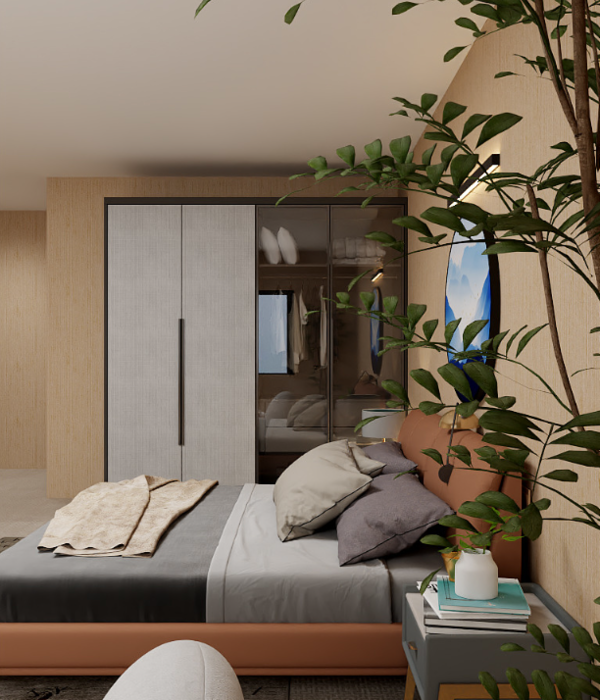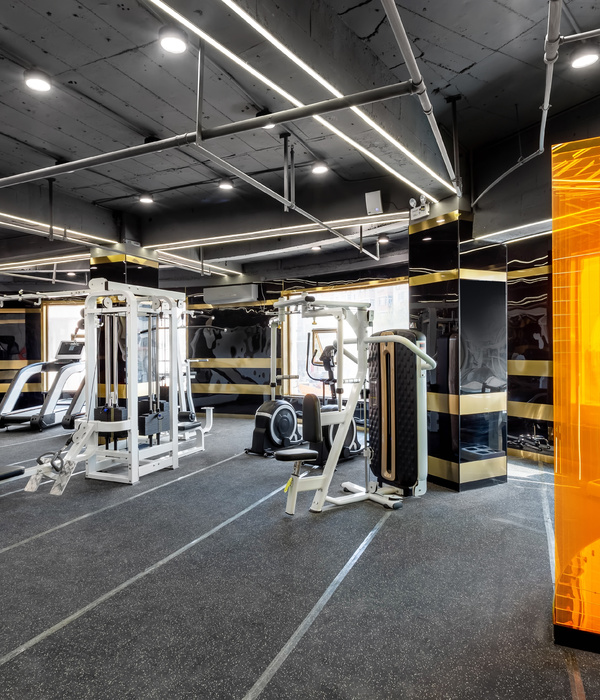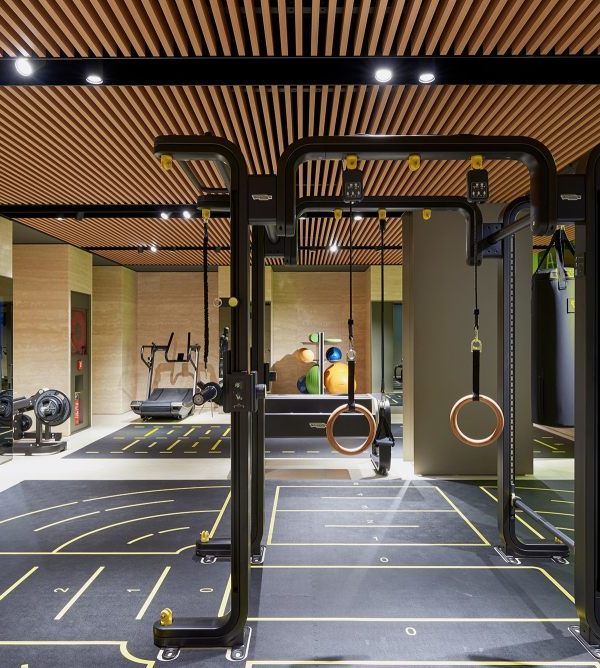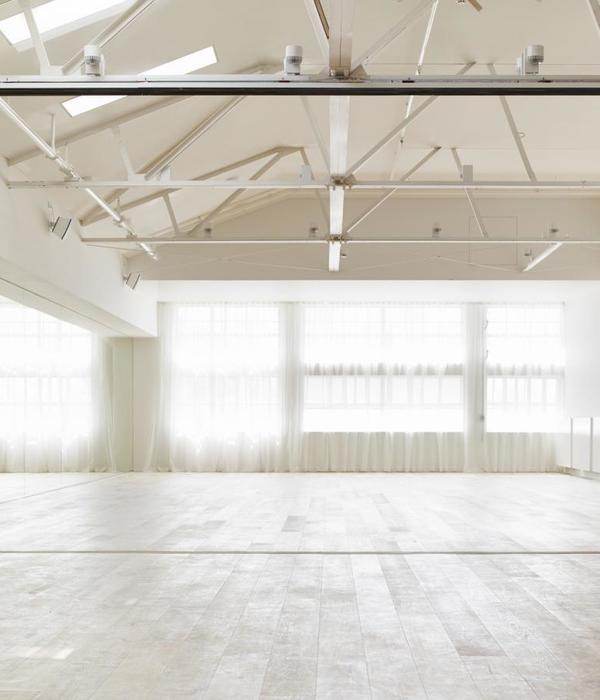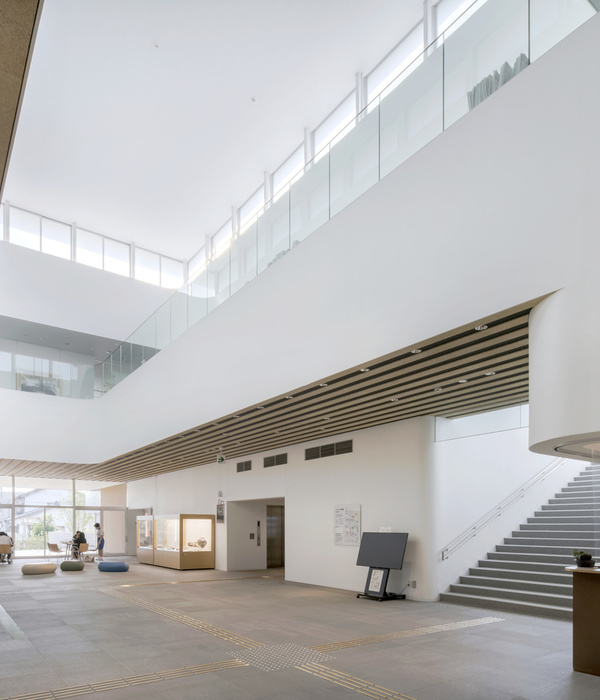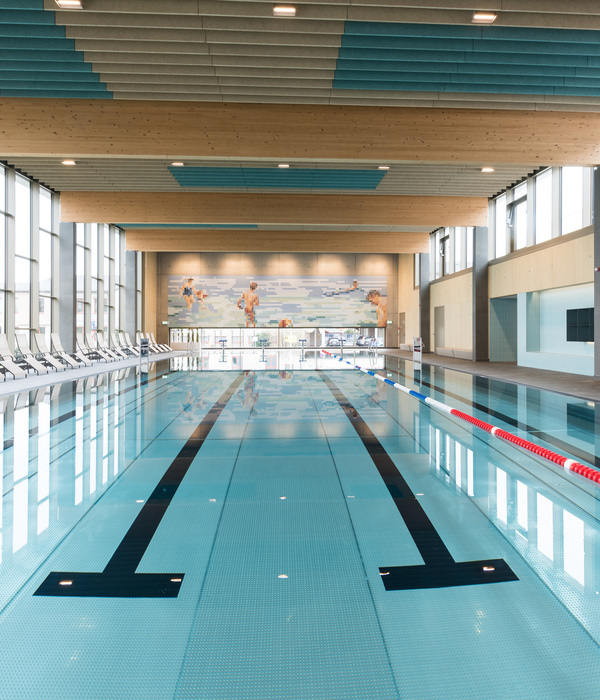© Enrique Villar Pagola, Juan Carlos Quindós
(C)Enrique Villar Pagola,Juan Carlos Quindós
架构师提供的文本描述。圣约翰保罗二世教堂位于住宅区,位于一片绿地上,从一条交通稀少的街道进入。这是一座小教堂,专供当地居民使用。所建议的是一座圆形的建筑,考虑到景观中的凹槽,其意图是创作一件雕刻的作品,展示它作为一座杰出建筑的特点。
Text description provided by the architects. The Church of St. John Paul II is situated in a residential estate, on a parcel of land set in a green space with access from a street with little traffic. This is a small church destined for use by the residents of the area. What was suggested was a building with a rounded volume, taking into account the recesses in the landscape, with the intention of generating a sculptured piece which illustrates its character as an outstanding edifice.
© Enrique Villar Pagola, Juan Carlos Quindós
(C)Enrique Villar Pagola,Juan Carlos Quindós
当横穿时,巨大的总体积被分解成几个部分。它在遮阳篷下展开,遮住外面的中庭和钟楼。它被当作一个实体来处理,一直挖掘到最后的结果。光的光阑集中在与通道相连的基座上。
The massive total volume is broken down into parts when it is transversed. It spreads out under the awning which covers the atrium in the exterior and the bell tower. It has been dealt with as a solid body which has been excavated until reaching the final result. The apertures for light are concentrated in the bases connected to the accesses.
© Enrique Villar Pagola, Juan Carlos Quindós
(C)Enrique Villar Pagola,Juan Carlos Quindós
整座建筑物是用两种材料建造的:一种是花岗岩基座,根据高度调整,另一层是石灰石,使其具有巨大的特性。在没有任何其他材料的情况下完成护栏有助于增加圆形体积的概念。
The whole edifice has been built with two materials: a granite base which adjusts itself to the height, together with a covering of limestone which gives it its massive character. The finish of the parapets without coping of any other material contributes to increase the idea of a rounded volume.
© Enrique Villar Pagola, Juan Carlos Quindós
(C)Enrique Villar Pagola,Juan Carlos Quindós
在内部,建筑被设计成一个双高度的奇异的内凹,它扩展到一个侧面的内凹,在那里可以找到帐幕的礼拜堂以及辅助空间。唱诗班被发现“漂浮”在中段,与其传统的布局相比更向前。这样,从室外行人公共空间开始,就形成了一个逐步进入室内的连续通道。这将继续在有盖的外中庭中盖上内釉的中庭,到达唱诗班底部之前的光裂缝,以及祭坛的逐步展开,而整个内殿的空间都被天象光淹没了。
In the interior the building has been designed as a singular nave with double height which expands into a lateral nave where the chapel for the tabernacle as well as auxiliary spaces can be found. The choir is found “floating” in the middle of the nave, further forward compared to its traditional placement. In this way a gradual sequential access to the interior has been created which commences in the outdoor pedestrian public space. This continues rom the covered exterior atrium with its awning to the interior glazed atrium, the crevice of light before reaching the base of the choir and the progressive uncovering of the altarpiece while the entire space of the nave is inundated with zenithal light.
室内也被以雕塑的方式处理,培育出土的体积,推动空间产生自然光的入口从三个方向与太阳的方向在白天。有人试图将光源隐藏在视线之外。在帐幕的小礼拜堂、长老院的后部、辅助性的空间和用木条做成的格子间之间,已经建立了一个内部的层次,它构成了帐幕的礼拜堂、长老会的后部和辅助空间。
The interior has also been treated in a sculptured manner, fostering the excavated volumes which push the space generating entrances for natural light from three directions connected to the orientation of the sun during the day. It has been attempted that the light sources are hidden from view. An interior level has been established to the base which forms the chapel of the tabernacle, the back of the presbytery and the auxiliary spaces joined together with a latticework made of strips of wood.
© Enrique Villar Pagola, Juan Carlos Quindós
(C)Enrique Villar Pagola,Juan Carlos Quindós
© Enrique Villar Pagola, Juan Carlos Quindós
(C)Enrique Villar Pagola,Juan Carlos Quindós
中央凹被一系列预应力混凝土梁覆盖,形成一个连续的平面,并隐藏电气和其他系统。这样,横向封闭就形成了巨大的紧凑体积,屋顶梁和唱诗班平台由连续基座支撑并浮起。室内的木匠,长椅和教堂的家具,通过使用“Iroko”木材统一,提供温暖和一个亲密的规模在中央的内殿。
The central nave is covered with a series of prestressed concrete beams which form a continuous plane and hide the electrical and other systems. That way a massive compact volume is formed by the lateral closures, the roof beams and the choir platform is supported by and floats over the continuous base. The carpentry of the interior, the benches and the church furniture, unified by the use of “Iroko” wood, provide warmth and an intimate scale in the central nave.
© Enrique Villar Pagola, Juan Carlos Quindós
(C)Enrique Villar Pagola,Juan Carlos Quindós
这件祭坛是雕塑家哈维尔·马丁内斯的作品,它被认为是一个场景,专门为它所代表的场景而工作。特别注意光、背景和数字之间的空间关系。
The altarpiece, which is the work of the sculptor Javier Martinez, has been conceived as scenographic, specially worked for the scene which it represents. Special attention has been given to light, the background and the spatial relationships between the figures.
© Enrique Villar Pagola, Juan Carlos Quindós
(C)Enrique Villar Pagola,Juan Carlos Quindós
Architects VZ Arquitectos
Location Av. Miguel de Cervantes, 8, 47130 Entrepinos, Valladolid, Spain
Category Churches
Author Architects Enrique Villar Pagola, Rodrigo Zaparaín Hernández
Collaborators Fernando Vassallo Magro (architect), Javier Martínez Pérez (altarpiece sculptor), Lope Hierro Martín (draftsman)
Area 920.0 sqm
Project Year 2008
Photographs Enrique Villar Pagola, Juan Carlos Quindós
{{item.text_origin}}

